How Can We Improve Our QA Processes to Catch Bugs Earlier in Development?
Want fewer bugs in production? This guide shows how smarter QA processes can make it happen.

Bugs. The bane of every developer’s existence.
You think you’ve nailed it. The code works on your machine. You push it live. And then… chaos. Users flood your inbox with complaints. "Why isn’t this working?"
We’ve all been there. At 1985, an outsourced software development company I run, we’ve seen how early bugs can spiral into costly problems. Clients lose trust. Developers get frustrated. Timelines fall apart. And, honestly, it’s just exhausting.
But here’s the thing. Catching bugs earlier isn’t just about writing better code or hiring more testers. It’s about improving the entire process of quality assurance (QA). Think of QA like the immune system of your development workflow. The stronger it is, the less your project suffers.
In this post, I’ll share actionable strategies—ones we’ve honed at 1985—to improve QA processes so bugs get caught before they cause havoc. Now let's start.

Start with a QA Mindset
QA isn’t a department. It’s a culture. And that’s where many teams go wrong.
Too often, QA is treated as an afterthought. A final gatekeeper. Developers toss the code over the wall, and testers scramble to catch whatever’s broken. This siloed approach is inefficient—and worse, it’s expensive.
A study by the Systems Sciences Institute at IBM found that fixing a bug during the design phase costs about $100. But fixing that same bug after deployment? $15,000. Let that sink in.
Instead, foster a QA-first mindset:
- Shift Left Testing: Integrate QA activities earlier in the development lifecycle. Involve testers during planning, design, and coding phases. They’ll spot inconsistencies and ambiguities before they morph into bugs.
- Collaborative Ownership: Everyone—not just QA specialists—owns quality. Developers write testable code. Product managers clarify requirements. Testers provide feedback from day one.
- Continuous Feedback Loops: Make quality an ongoing conversation. Daily standups, code reviews, and design discussions should all include quality as a topic.
Changing the mindset is step one. But you’ll need processes and tools to support it.
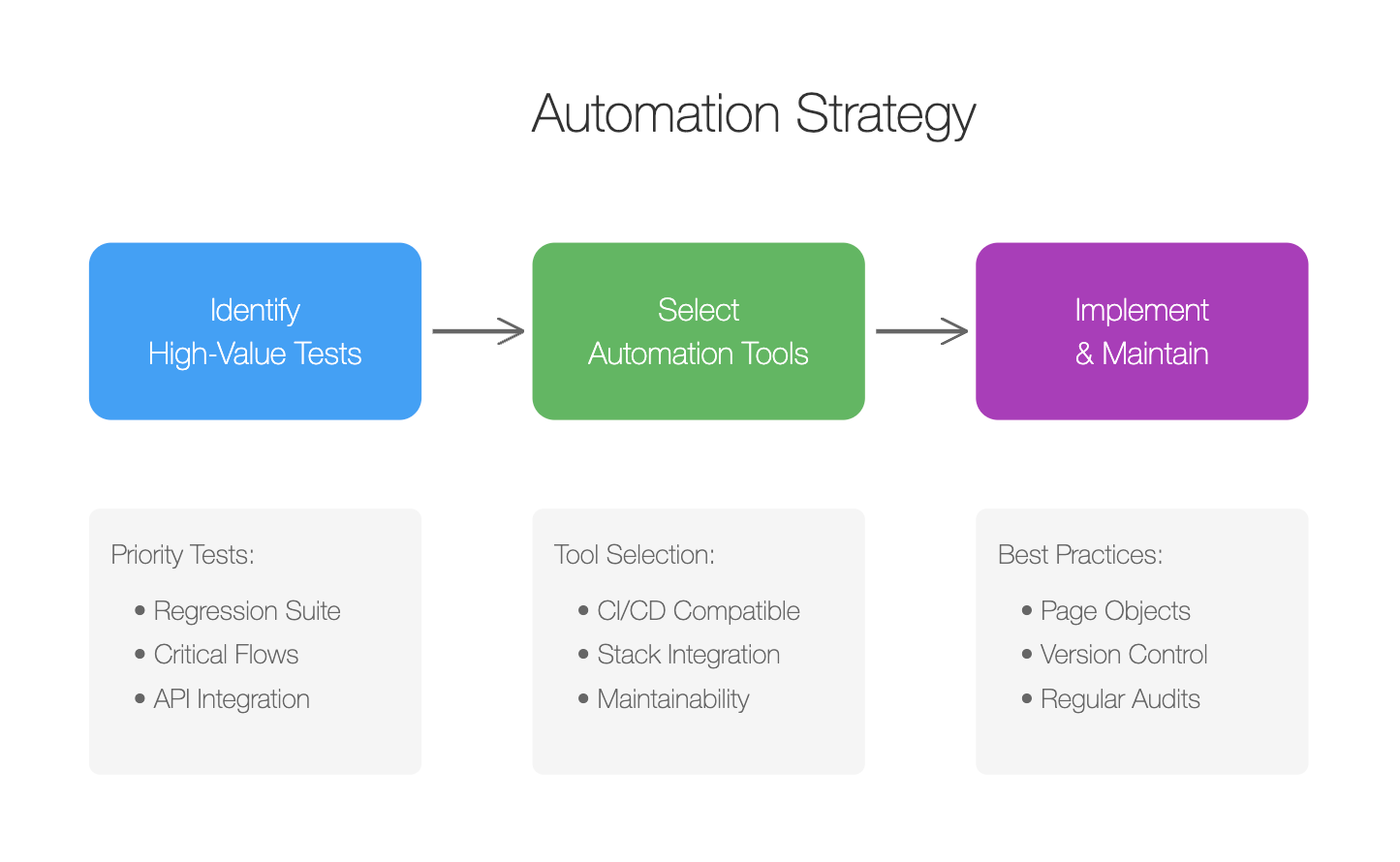
Automate the Boring Stuff
Let’s be honest. Nobody loves repetitive tasks. Manual regression testing? It’s mind-numbing. And worse, it’s prone to human error.
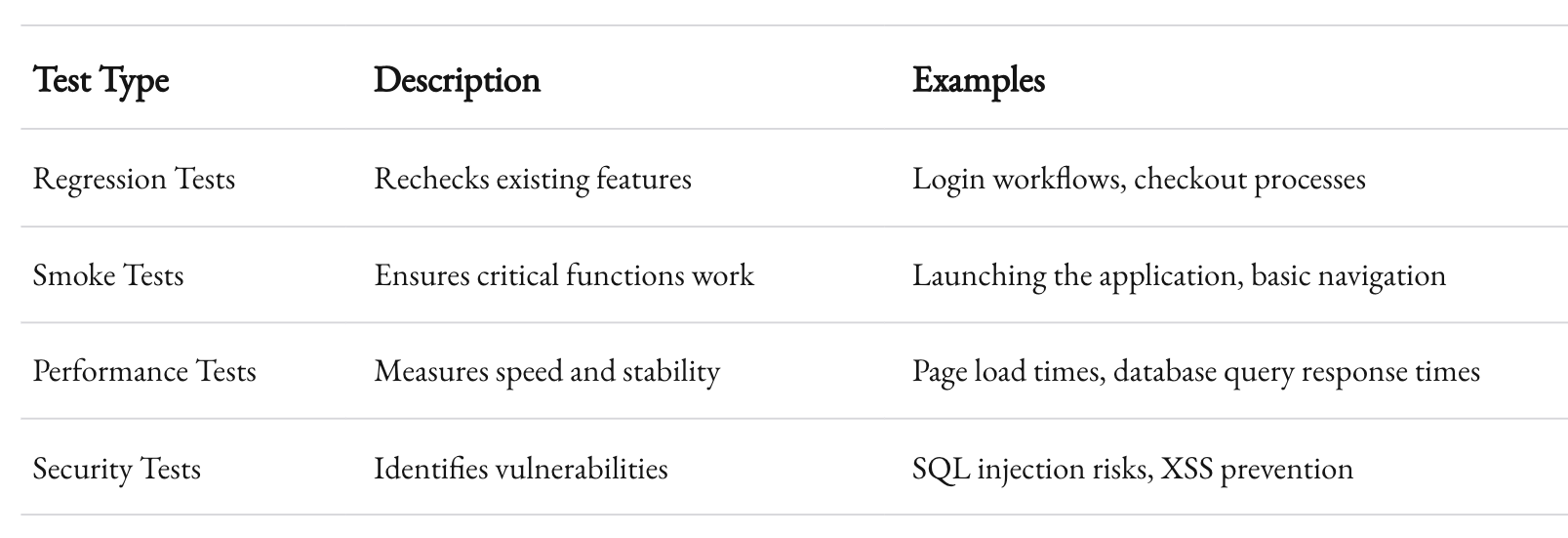
Automation, when done right, is a game-changer. Here’s how you can make the most of it:
Focus on High-Value Tests
Not everything needs automation. Prioritize tests that:
- Run frequently (e.g., regression suites).
- Are prone to human error.
- Cover critical user flows or high-risk areas.
For instance, automating login workflows, payment gateways, or API integrations often yields the best ROI.

Choose the Right Tools
The tool you pick matters. Choose one that integrates with your tech stack and CI/CD pipeline. At 1985, we’ve had success with:
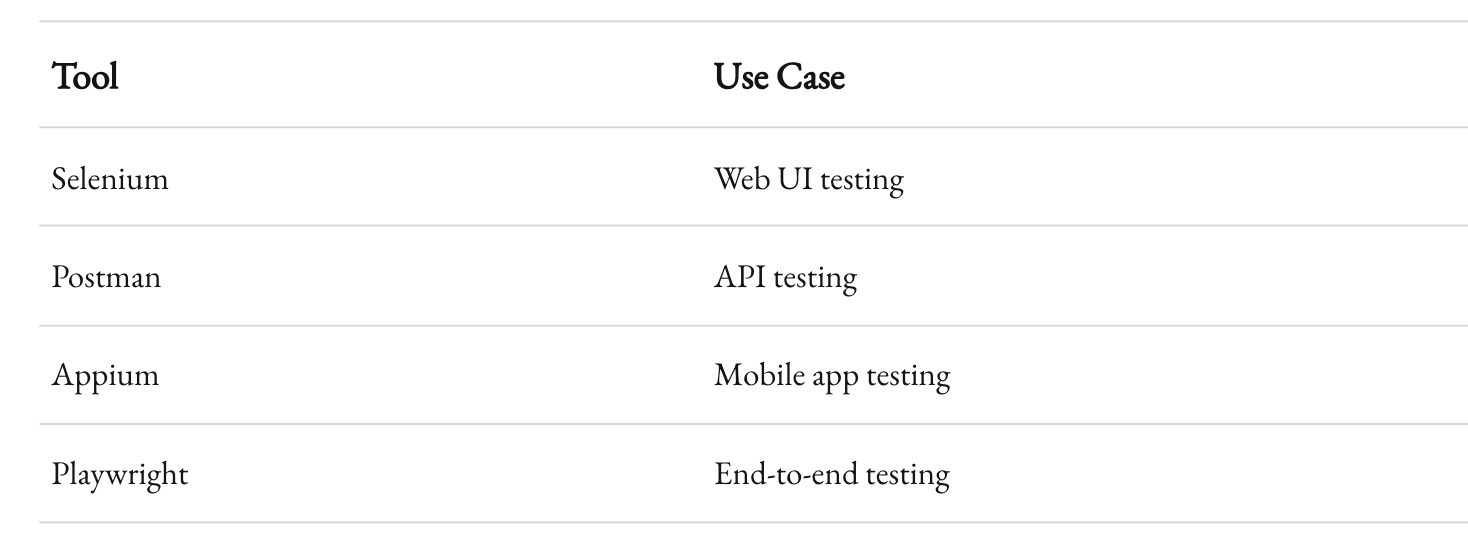
Keep Maintenance Manageable
Automation can backfire if it’s poorly managed. Tests that break every time the UI changes? A nightmare. Use practices like:
- Page Object Models: Abstract the UI structure to make tests less brittle.
- Version Control: Keep your test scripts in the same repository as your codebase for better traceability.
- Regular Audits: Periodically review and prune obsolete or flaky tests.

Tighten Your Requirements
Bugs often start with unclear requirements.
"We’ll figure it out as we go" might sound agile, but in practice? It’s a recipe for disaster. Misaligned expectations lead to bugs that feel inevitable. Fixing this requires rigorous upfront work.
Get Specific
Vague requirements are the enemy. Instead of saying, “Users should log in easily,” break it down:
- What authentication methods will we support (e.g., password, OTP, social logins)?
- What happens if a user enters the wrong password?
- Do we need multi-language support?
Use Acceptance Criteria
Define "done" for every feature. Acceptance criteria provide a shared understanding of success. Example:
Feature: User login
Acceptance Criteria:
- Users can log in with email and password.
- Passwords must follow the defined complexity rules.
- Failed login attempts should show an error message and allow retries up to 5 times.
- Login events must be logged for security auditing.
Include QA in Requirement Discussions
When testers participate in requirement discussions, they spot ambiguities that others overlook. This proactive involvement reduces the risk of bugs downstream.

Embrace Static Code Analysis
Think of static analysis tools as your second pair of eyes. They review code for vulnerabilities, style violations, and anti-patterns before it’s even run.
Why It Works
Static analysis doesn’t rely on test cases. Instead, it flags potential issues by analyzing the codebase itself. This makes it particularly effective for:
- Detecting security vulnerabilities (e.g., SQL injection risks).
- Ensuring adherence to coding standards.
- Catching performance bottlenecks.
Popular Tools
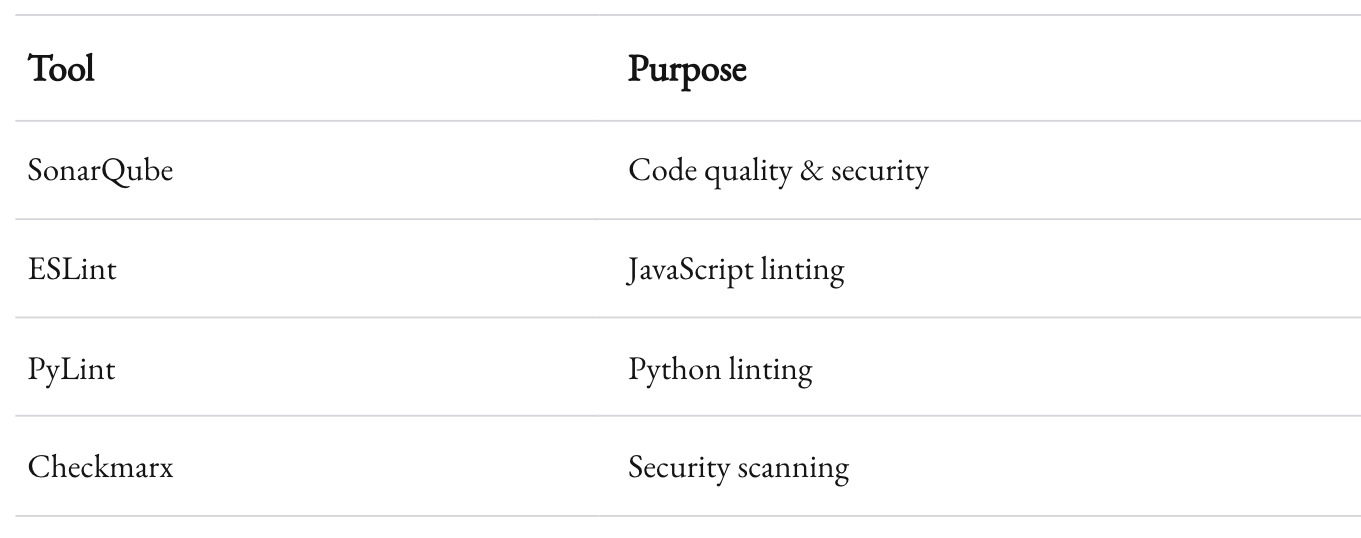
Integrate these tools into your CI/CD pipeline so they run automatically with every commit.
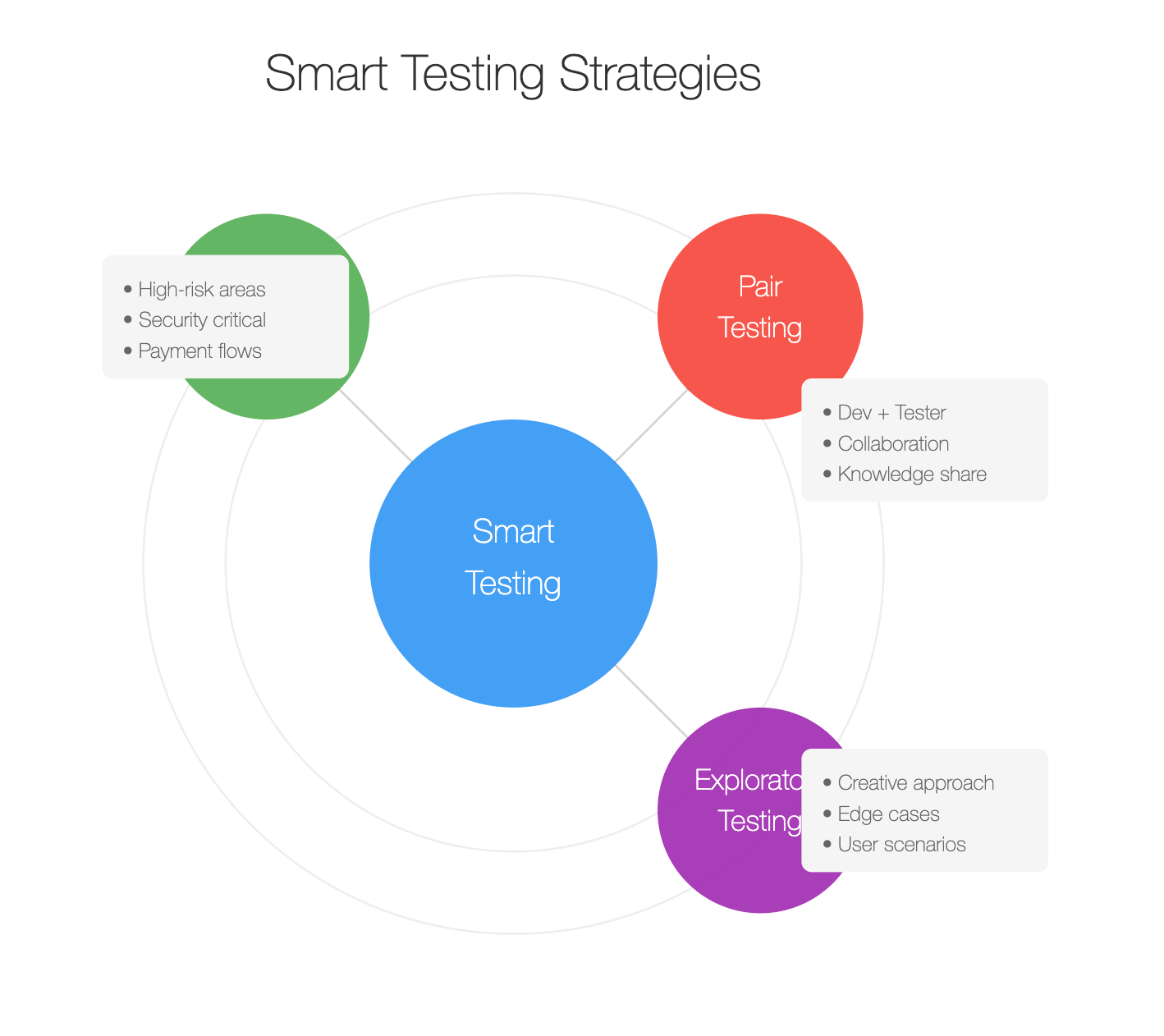
Test Smarter, Not Harder
Testing everything is impossible. You’ll run out of time, money, and patience. Instead, focus on strategies that maximize impact:
Risk-Based Testing
Allocate resources based on risk. High-risk areas (e.g., payment processing, sensitive data handling) deserve more attention. Low-risk ones can often rely on automated smoke tests.
Exploratory Testing
Automation has its limits. Human testers bring creativity and intuition that scripts can’t match. Encourage exploratory testing sessions where testers follow their instincts to uncover edge cases.
Pair Testing
Two heads are better than one. Pair a tester with a developer and have them test a feature together. The collaboration often reveals issues neither would catch alone.

Learn from Failures
Bugs will slip through. It’s inevitable. But each failure is an opportunity to improve.
Conduct Post-Mortems
After every major bug, host a blameless post-mortem. Analyze:
- What went wrong?
- Why wasn’t this caught earlier?
- How can we prevent similar issues?
Document the findings and update your processes accordingly.

Track Metrics
You can’t improve what you don’t measure. Track metrics like:
- Defect Density: Bugs per 1,000 lines of code.
- Mean Time to Detect (MTTD): How long it takes to find a bug.
- Mean Time to Resolve (MTTR): How long it takes to fix a bug.
Over time, these metrics will reveal trends and bottlenecks in your QA process.
Invest in Your Team
Great tools and processes are useless without a skilled team. Invest in:
- Training: Keep your QA team updated on the latest testing techniques and tools.
- Cross-Disciplinary Knowledge: Developers should understand testing, and testers should understand development.
- Hiring Specialists: For complex projects, bring in domain experts (e.g., security testers for fintech apps).
Recap
Improving QA processes isn’t about doing one thing better. It’s about doing everything smarter. At 1985, we’ve seen firsthand how these strategies reduce bugs, boost efficiency, and, most importantly, deliver better software.
The goal isn’t perfection. It’s progress. Catching bugs earlier saves time, money, and sanity—for you, your team, and your clients.
Ready to strengthen your QA immune system? Let’s start today.



